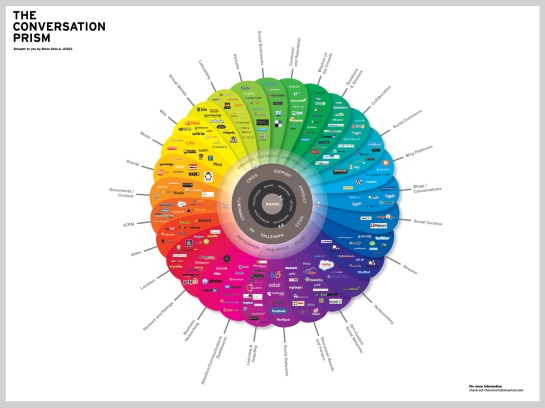Facebook, Twitter, LinkedIn, Google+, Flickr, the list goes on and on. In fact there are hundreds of social networking sites and that’s if you ignore the proliferation of new community sites that companies, clubs and societies have integrated with their websites.
The difficulty for any new brand wanting to be noticed, wanting to be part of consumers’ conversations is how to break above the level of the noise.
It used to be the case that a new company could get noticed simply by being on Twitter. Now that medium is too congested with literally hundreds of thousands of companies trying to seem exciting and different. Unless you are lucky and just happen to hit upon a viral advertising idea or better still a meme (and you might have more chance of being struck by lightning), you’ll end up spending big bucks just like in any advertising medium to get noticed. Then there is the problem of which social media site do you talk to your customers on? There are a bewildering array of possibilities and a fragmented conversation amongst all of them.
So should new companies with small budgets abandon social media altogether? Absolutely not but you should understand what you’re trying to achieve. For any company playing in the social arena there are some general guidelines that may help you become more than just an addition to the noise:
1. Understand the benefits of your product and make it appear appealing in the most impactful way you can. This can mean spending at least a little money. A professionally produced video showcasing you and your product can be created for as little as a few hundred pounds. The internet loves videos and a well produced video posted to the right social media sites still has the ability to get you noticed especially if your product is particularly exciting or presented in a quirky enough way. In addition, keep on talking about your product and find something new and interesting to say each time. Keeping foremost in people’s consciousness is incredibly important in getting noticed and staying noticed.
2. Use social media to start a conversation with your customers. Choose a couple of the most popular social media sites and let your customers know that this is where they can talk to you and to each other. Creating a vibrant community who are discussing your product can be very useful for spreading the word about new launches and features. It can also help you understand how your customers are using your product and how to improve it.
3. Be responsive, run your own community and respond to your customers through that community when they have concerns. In other words, embrace social support. Increasingly customers will use social media as a channel to ask you questions and you need to be ready to answer them. Consider having your own community on your web site linked to other social media sites. Certainly you’ll need to think about how you integrate social media support into your support process so that it doesn’t become a way for your customers to get rapid ad hoc support.
4. Listen to the mood. Great new services like Datasift are appearing that look at a range of social media sites and can tell you a lot about how your customers perceive you. This can really help you to sift the signal from the noise and understand how your customers feel about you and your products. Interestingly this type of analysis works equally well in helping you understand how they feel about your competitors.
The social media world is complex and getting more so, but for company executives that take the time to understand why the social conversation is important there are potentially large rewards.

